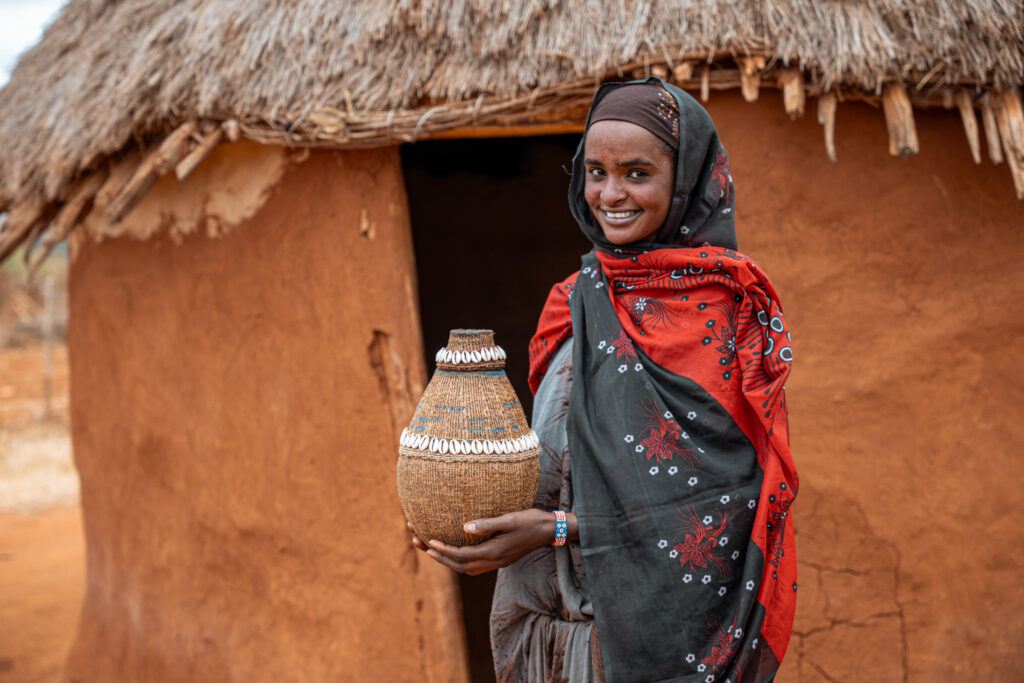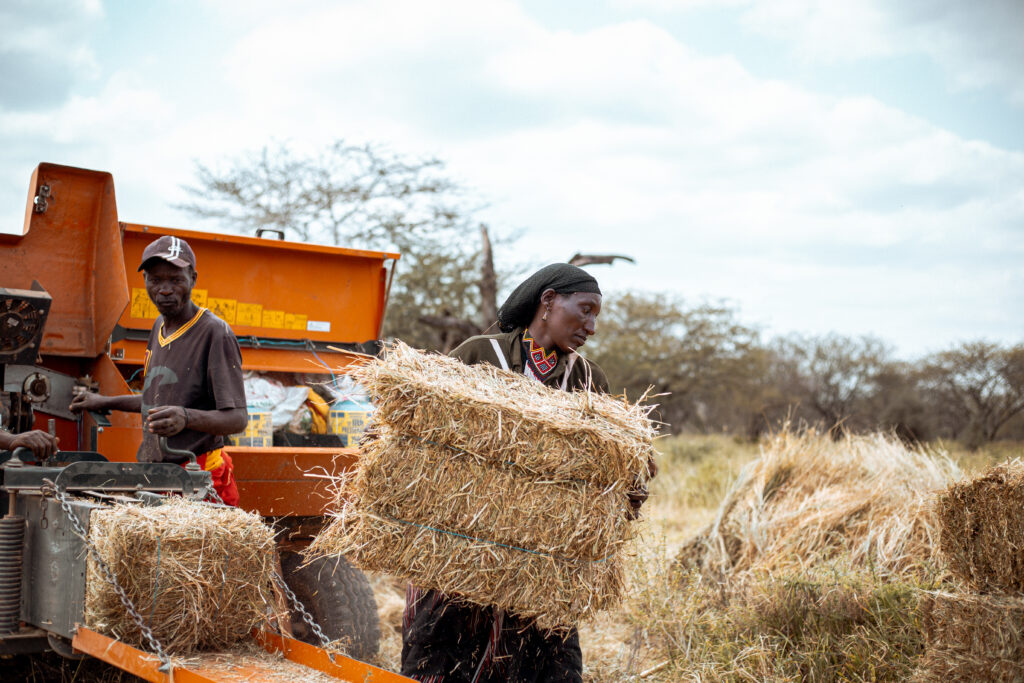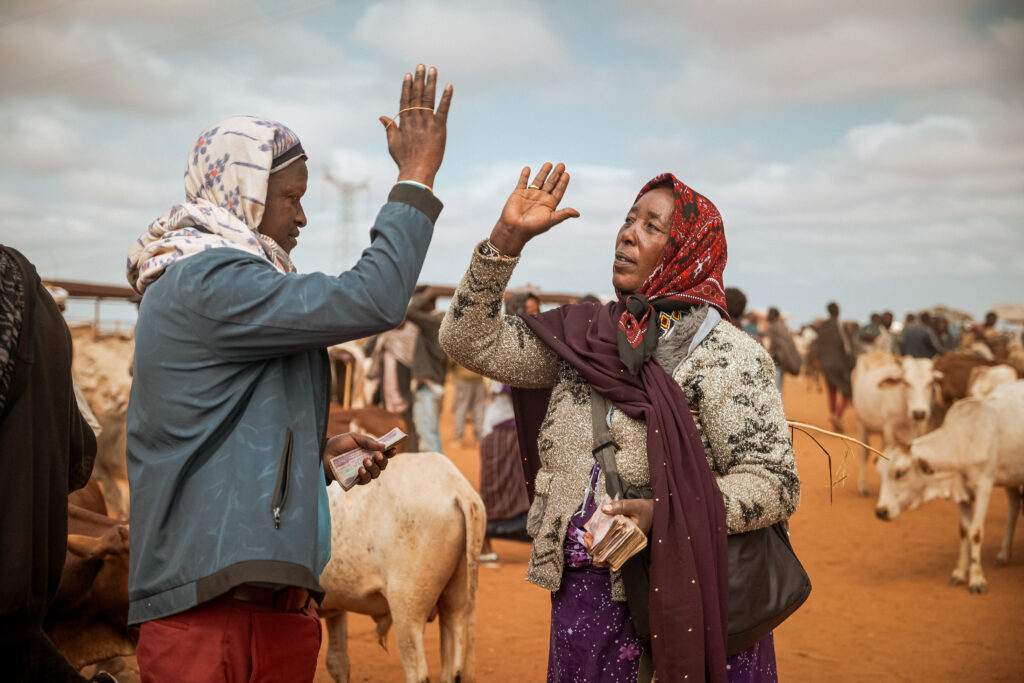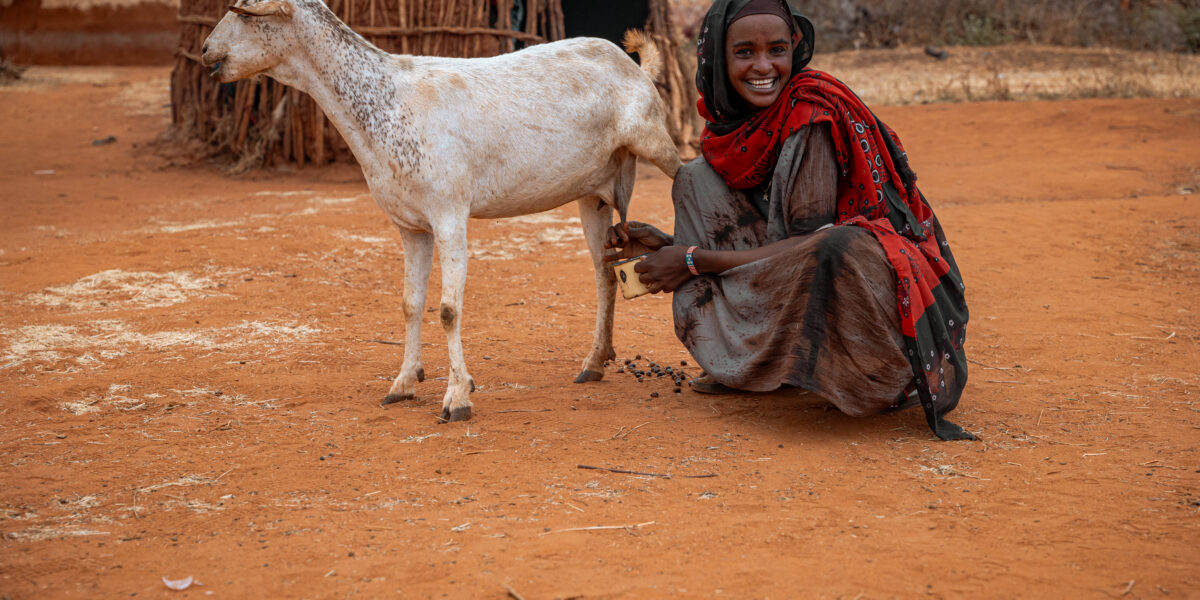Pastoralist and agro-pastoralist communities in Ethiopia, Kenya and Somalia rely almost entirely on livestock for their livelihoods. In arid and semi-arid lands, livestock is central to food security, income generation and resilience. However, climate change, rangeland degradation and weak governance are undermining this way of life, while rising demand for animal-sourced foods presents both a challenge and an opportunity. The Regional Livestock Program (RLP), funded by the Swiss Agency for Development and Cooperation (SDC), was established to address these systemic issues and promote inclusive, climate-resilient and market-driven livestock systems across the Horn of Africa.
RLP is implemented by a consortium of partners that includes the Intergovernmental Authority on Development, Mercy Corps, Helvetas, and Welthungerhilfe. Anchored in a 12-year vision, the programme focuses on improving livestock productivity and health, particularly for poor producers, women and youth, while strengthening market systems, cross-border trade corridors and natural resource governance. It also supports participatory rangeland management and disaster preparedness.
In Ethiopia, RLP operates along the Moyale-Nairobi-Adama-Addis Ababa trade corridor, with Helvetas and Welthungerhilfe leading interventions and providing technical leadership in natural resource management, enhancing production and productivity among smallholder and medium-scale livestock producers, market systems development, women’s economic empowerment, and governance. The current phase runs from January 2023 to December 2026.
A facilitative model for systemic change
RLP employs a Market Systems Development (MSD) approach. This facilitative model emphasises co-investment, community ownership and private sector engagement. RLP targets structural barriers such as high transaction costs, climate shocks and gender disparities.
In the first half of 2025, RLP facilitated inclusive community dialogues involving 178 stakeholders, rehabilitated 400 hectares of rangeland, and restored traditional water governance systems. These efforts improved pasture and water access for 1,295 pastoral households, supporting over 800 livestock during the dry season.
Women at the forefront of livestock economies
One of the most compelling illustrations of women’s economic empowerment through the programme is the transformation of the Badhadhina Hodhod Women Milk Trading Group in Dire Woreda. Originally established through the Sustainable Natural Resource Management for Enhanced Pastoralist Food Security project in Borana Zone, an SDC project, this cooperative began as a modest initiative to support pastoralist women in milk collection and informal trade. With strategic support from RLP, including training in financial literacy, record-keeping and leadership, the group evolved into a structured and self-sustaining enterprise.

Today, the cooperative operates with remarkable efficiency and scale. It serves a customer base of over 5,000 regular buyers, collects 300-400 liters of milk daily, and generates quarterly revenues exceeding USD 11,000. The women have taken full ownership of the business, managing operations, quality control and pricing strategies independently. Their success has not only elevated household incomes but also positioned them as influential actors in the local dairy economy.
By investing in women’s capacity, linking women to markets, and promoting business autonomy, the program not only improves livelihoods but also challenges traditional gender norms in pastoralist communities. Women are no longer confined to informal roles; they are emerging as entrepreneurs, decision-makers and leaders in livestock economies.
Strengthening animal health and market linkages
A cornerstone of RLP’s success in enhancing pastoral resilience has been its strategic investment in last-mile animal health service delivery. By strengthening the capacity and reach of Community Animal Health Workers (CAHWs) and Private Veterinary Pharmacies (PVPs), RLP has addressed one of the most persistent challenges in pastoralist regions: access to timely, affordable and quality veterinary care.
By mid-2025, this integrated approach had reached 44,674 households. CAHWs, equipped with veterinary supplies and technical training, generated over USD 18,000 in drug sales and provided advisory services to 8,894 customers. These figures reflect not only the growing demand for decentralised animal health services but also the viability of CAHWs as micro-entrepreneurs within the livestock value chain. Their linkage with PVPs has created a functional ecosystem where veterinary inputs flow efficiently from urban centers to remote pastoral communities, improving herd health and productivity.
In parallel, RLP has actively facilitated business-to-business networking events to strengthen market linkages across the livestock sector. These events have been particularly transformative for women goat traders, who traditionally faced barriers to accessing formal markets. Through structured engagement with national buyers and abattoirs, women entrepreneurs have expanded their market reach and improved their bargaining power. By connecting directly with larger buyers, women traders are bypassing exploitative intermediaries, negotiating better prices, and reinvesting profits into their businesses and communities.
Climate adaptation and peacebuilding
RLP’s integrated approach to climate resilience is built on three interlinked pillars that have proven highly effective in pastoralist settings. The first is Participatory Scenario Planning, which brings together traditional forecasters, community elders and government meteorological experts to co-create seasonal forecasts and preparedness strategies. These sessions blend indigenous knowledge with scientific data, enabling communities to anticipate climate risks and take proactive measures such as destocking, haymaking and water conservation before droughts strike.
The second pillar is the establishment of early warning systems that disseminate timely and actionable information to pastoral households. These systems leverage both conventional channels and local networks to ensure that even remote communities are informed about impending climate events. In 2025 alone, over 74,000 individuals benefited from these adaptation measures, more than six times the annual target, demonstrating the reach and relevance of RLP’s climate resilience efforts.
The third component is soil and water conservation, which includes the rehabilitation of degraded rangelands and the construction of physical structures such as soil bunds and traditional ponds. These interventions restore ecological balance while also improving access to water and fodder, directly enhancing livestock productivity and household food security.
Complementing these technical measures, RLP facilitated peace dialogues across 41 kebeles, engaging 906 participants, including elders, youth and local officials. These dialogues addressed long-standing disputes over grazing and water resources, revitalised traditional governance structures and promoted harmonious coexistence, further strengthening the resilience of pastoral communities in the face of climate and conflict shocks.
A cornerstone of RLP’s climate adaptation strategy is the introduction of a community-managed hay bale storage system. This initiative is designed to build resilience within pastoralist communities by enabling them to strategically harness the abundance of the rainy season. During this period of peak pasture productivity, communities are supported in systematically cutting and baling grass, converting ephemeral forage into a durable feed resource. These hay bales are then transported to a centrally located, communal storage facility. This collective warehouse serves as a vital feed bank, safeguarding the nutritional resources needed to sustain livestock through the lean, dry seasons. By mitigating the risks of fodder scarcity, the system enhances food security, protects pastoral assets, and provides a critical buffer against the volatility of the climate.

Driving investment and inclusive growth
To catalyse private sector engagement and stimulate investment in pastoral economies, the programme launched a competitive co-investment award scheme targeting six thematic areas: feedlot operations, milk collection and processing, veterinary services, livestock transportation, animal health inputs, and improved animal handling systems. This initiative was designed to attract and support market actors who demonstrate both entrepreneurial potential and alignment with RLP’s inclusive and climate-resilient market systems approach.
Following a rigorous selection process, including technical reviews, financial evaluations and site assessments, seven market actors were awarded co-investment grants. These included five private veterinary pharmacies and two livestock fattening enterprises. Their selection reflects a growing appetite among local businesses to invest in livestock value chains and signals a shift toward more sustainable, market-driven service delivery models in pastoral regions.
One of the standout achievements under this initiative was the success of women-led cattle fattening enterprises. In the first half of 2025, these businesses collectively fattened and sold 73 bulls, generating an impressive USD 84,000 in revenue. This not only demonstrated the commercial viability of small-scale feedlot operations but also created employment opportunities for youth and contributed to local economic development. The women entrepreneurs sourced fodder from local suppliers, procured veterinary inputs, and engaged both permanent and temporary labour, showcasing a holistic and inclusive business model.
These results underscore the effectiveness of RLP’s facilitative approach in unlocking private sector investment, empowering women entrepreneurs, and strengthening backwards and forward linkages across the livestock value chain. As the programme scales, such co-investment mechanisms will remain central to fostering resilient, inclusive and competitive livestock economies in the Horn of Africa.

Lessons learned and forward outlook
The implementation of RLP has yielded several critical lessons that are shaping its future direction. One of the most significant insights is the power of community-led approaches. When communities are actively involved in planning and executing interventions, such as rangeland rehabilitation or water resource management, they develop a stronger sense of ownership. This not only enhances sustainability but also ensures that solutions are locally relevant and resilient to external shocks.
Another key learning is the importance of inclusive participation, particularly in addressing gender disparities. By engaging both women and men in decision-making and implementation, RLP has helped reduce the disproportionate burden often placed on women in pastoral settings. This inclusive model has fostered shared responsibility and improved outcomes in areas such as milk marketing, animal health and resource governance.
The programme has also demonstrated that private sector engagement is essential for innovation and employment generation. By supporting women-led enterprises, veterinary pharmacies and livestock fattening initiatives, RLP has catalysed local business development and created new income opportunities, especially for youth and women, within the livestock value chain.
Dialogue and coordination have also proven to be powerful tools for improving market governance and mitigating conflict. Multi-stakeholder forums and peace dialogues have helped resolve disputes over grazing land and water access, while also strengthening relationships between customary institutions and formal government structures.
RLP’s facilitative model continues to prove effective in catalysing systemic change. As the programme moves into its next phase, it will prioritise accelerating implementation, deepening market linkages, and expanding access to financial services to ensure more inclusive and resilient pastoral economies.
Author: Ephrem Taye, Communications and Advocacy Expert, Helvetas Ethiopia.


